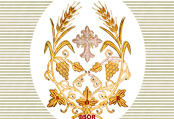
 |
|
||
| Holy
Virgin Mary Church (Valiyapally) Kottayam |
|
Source: Pamphlet published by Valiapally; Photographs taken in August 1996 The history of Kottayam in the early centuries of the Christian era is obscure. Geologists are of the view that the western part of Kottayam emerged from the Arabian Sea as a result of some violent convulsion of nature. In the 13th Century A D. Thaliyilkotta, about 2 km. west of the present center of Kottayam town (Thirunakkara) became the capital of a small princely state called Thekkumkur and most probably the name Kottayam was derived from ''Kotta-akom" (fortified town). There is still a temple at Thaliyilkotta built by theThekkumkur Rajas. Not very far from this temple, on the top of a small hill, nursed by the Meenachil River at the foot, stands the ancient Syrian Knanaya church.This church is the mother church of most Christians of this area. The church was built in the year 1550 AD by the descendants of the Syrian Knanaya Christians who migrated to India in 345 A.D. from Jerusalem and near-by places under the leadership of Kana Thoma. The migrants consisted of Bishop Joseph of Urhoy (Edessa), two priests and two deacons, besides a group of four hundred persons, representing seventy-two families from seven clans. They landed at Kodungallor and were cordially welcomed by Cheraman Perumal, the then ruler of Malabar, Northern region of modern Kerala. This church is also famous for its two granite crosses known as Persian crosses. These crosses were brought here from a much older church near Crangannore built by the forefathers of the builders of this church. On each of the stone slabs there is a cross with an inscription in the Pahalavi language, which was the official language of the Sassanian dynasty in Persia. The small slab 75 cm. x 58 cm. is fixed on the northern altar and is more ancient while the big slab 220 cm. x 103 cm. is set up on the southern altar of this church. The inscriptions in Pahalavi are one and the same on both the slabs except for the additional inscription in Syriac (in Estrangelo script) on the big slab placed on the southern altar. Many scholars and researchers have visited this church and tried to decipher these inscriptions in Pahalavi. The interpretation of Dr. Burnnel (former Archaeological Director of India) is regarded as most acceptable. It reads as follows:
The Syriac inscription on the big slab is from the Epistle to the Galatians 6:14 which reads: "May I never boast except in the cross of our Lord Jesus Christ". The cross on the Southern Altar resembles the one at St. Thomas Mount, Mylapore, Madras.There are rare antique carvings and mural paintings behind the main altar and on the ceiling. Lord Irwin, Viceroy of India, Emperor Haile Sellassie of Ethiopia and many other dignitaries have visited this church. H.G. Mor Severios Gheevarghese, the first Metropolitan of Knanaya Diocese is laid to rest in this church. Source: Pamphlet published by Valipally
|
| Copyright © Syriac Orthodox Resources. All Rights Reserved. |
| Last Update: November 14, 1996 |